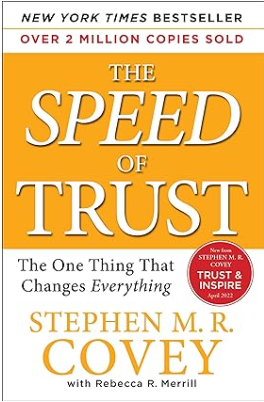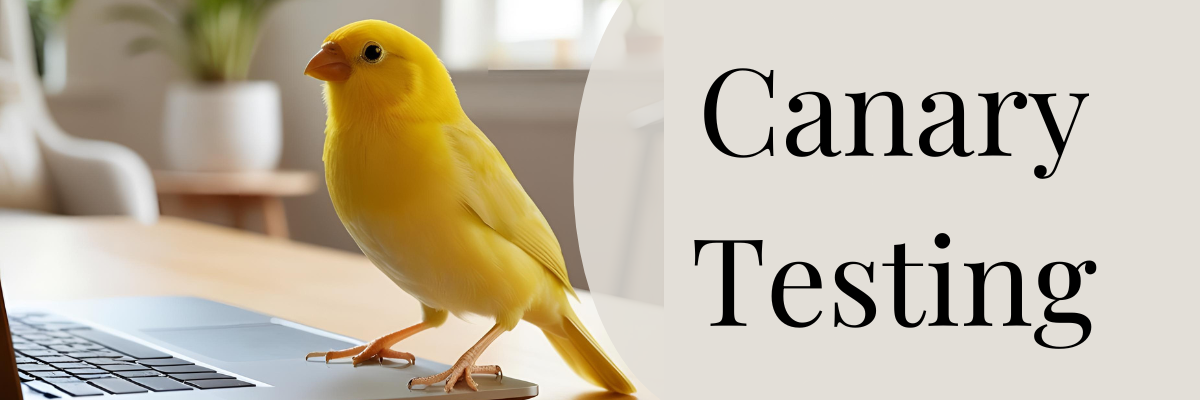In the fast-paced and evolving landscape of today’s workplace, trust stands as the cornerstone of successful teamwork. As Stephen M.R. Covey states in his book, “The Speed of Trust,” building trust is not just a nice-to-have but a critical factor that directly impacts the speed at which teams can operate and achieve their goals. Let’s explore some of the key principles from this insightful book to discover how we can cultivate a culture of trust within our teams.
- Integrity Matters: The Foundation of Trust Covey emphasizes the importance of integrity in building trust. Teams thrive when individuals consistently demonstrate honesty and uphold their principles. Leaders should set the tone by being transparent, keeping commitments, and fostering an environment where ethical behavior is non-negotiable.
Example: A team leader’s consistent openness about both successes and challenges, taking responsibility for mistakes, and collaborating with the team to find solutions fosters trust. Transparency, even in difficult situations, builds a foundation of integrity that team members can rely on. - Intent: Aligning Goals and Purpose Trust is strengthened when team members share a common purpose. Leaders should ensure that everyone understands the team’s mission, values, and objectives. When individual and team goals align, trust naturally grows, as each member sees the collective benefit of their efforts.
Example: A software development team gains trust when the product manager effectively communicates the long-term vision of the project. Emphasizing the purpose of the software and highlighting its positive impact on users aligns individual and team goals, fostering trust in the collective mission. - Capabilities: Competence Builds Confidence Competence is a key component of trust. Team members need to be confident in each other’s abilities to deliver results. Investing in professional development, providing opportunities for skill enhancement, and recognizing achievements contribute to a culture where competence is celebrated and trust is reinforced.
Example: A marketing team invests in training sessions to enhance digital marketing skills. Recognizing and praising individual achievements builds confidence in the team’s capabilities. This culture values competence, contributing to trust in the team’s collective ability to deliver results. - Results: Demonstrating Success Trust is solidified when teams consistently deliver results. Leaders should set clear expectations, provide the necessary resources, and celebrate achievements. When individuals see the impact of their collective efforts, trust in the team’s ability to deliver grows exponentially.
Example: An advertising agency sets clear performance metrics for campaigns. Consistently meeting or exceeding targets and celebrating successful campaigns not only demonstrates results but also reinforces trust and motivates the team to continue delivering outstanding performance. - Accountability: Taking Responsibility In a high-trust team, accountability is not seen as a burden but as a shared commitment to success. Leaders and team members alike must take responsibility for their actions and decisions. When accountability is embraced, trust is not only built but also fortified through shared ownership.
Example: In a project with unexpected challenges, a team member takes ownership of a mistake without blame-shifting. This accountability fosters a culture of learning and improvement, building trust as team members rely on each other to address issues head-on. - Openness: Embracing Transparent Communication Communication is the lifeblood of trust. Open, honest, and transparent communication fosters an environment where misunderstandings are minimized, and collaboration is maximized. Leaders should encourage a culture where feedback is constructive, and information is shared freely.
Example: A design team holds regular brainstorming sessions where everyone is encouraged to share ideas openly. Constructive feedback is given in a respectful manner, creating an environment where team members feel comfortable expressing their thoughts. Open communication builds trust and fosters collaboration. - Listening: A Fundamental Element of Trust Trust is not a one-way street. It requires active listening and understanding. Leaders must create spaces for open dialogue, where team members feel heard and valued. This not only builds trust but also encourages a culture of collaboration and innovation.
Example: A project manager actively listens to team members’ concerns and suggestions during meetings. Implementing changes based on this feedback demonstrates a commitment to valuing and respecting each team member’s perspective. This approach builds trust by ensuring that everyone’s voice is heard and valued.
Conclusions from the ‘Speed of Trust’ Book:
“The Speed of Trust” teaches us that trust is not a soft skill but a hard-edged economic driver. It impacts the bottom line and determines the speed at which teams can achieve their objectives. By prioritizing integrity, aligning intent, focusing on capabilities, delivering results, fostering accountability, embracing openness, and actively listening, we can build a high-trust team that is not only resilient but also capable of reaching unprecedented heights. As we implement these principles, let’s remember that trust is not just a destination but an ongoing journey that requires dedication, consistency, and a shared commitment to success.
Lead with Trust
Learn how trust is the key to productivity in all interactions, from personal to organizational, with “The Speed of Trust” offering practical insights on establishing trust intentionally and avoiding time-consuming bureaucratic processes






